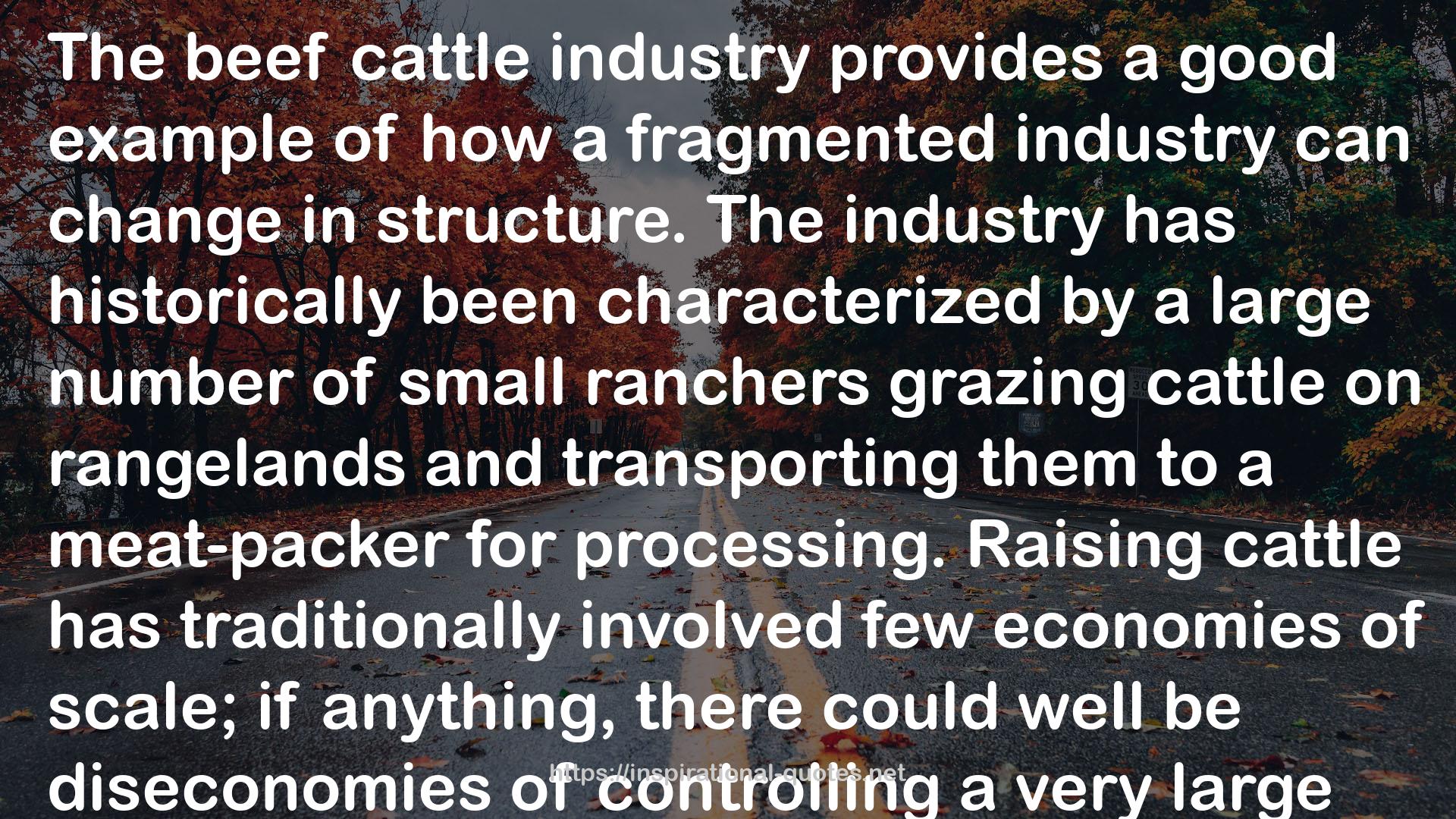" The beef cattle industry provides a good example of how a fragmented industry can change in structure. The industry has historically been characterized by a large number of small ranchers grazing cattle on rangelands and transporting them to a meat-packer for processing. Raising cattle has traditionally involved few economies of scale; if anything, there could well be diseconomies of controlling a very large herd and moving it from area to area. However, technological developments have led to the wider use of the feedlot as an alternative process for fattening cattle. Under carefully controlled conditions, the feedlot has proven to be a far cheaper way to put weight on animals. Constructing feedlots requires large capital outlays, though, and there appear to be significant economies of scale in their operation. As a result, some large beef growers, such as Iowa Beef and Monfort, are emerging and the industry is concentrating. These large growers are beginning to be large enough to backward integrate into processing of feeds and to forward integrate into meat processing and distribution. The latter has led to the development of brand names. In this industry the fundamental cause of fragmentation was the production technology utilized for fattening cattle. Once this impediment to consolidation was removed, a process of structural change was triggered which has encompassed many elements of industry structure going far beyond feedlots alone. "
― Michael E. Porter , Competitive Strategy: Techniques for Analyzing Industries and Competitors
